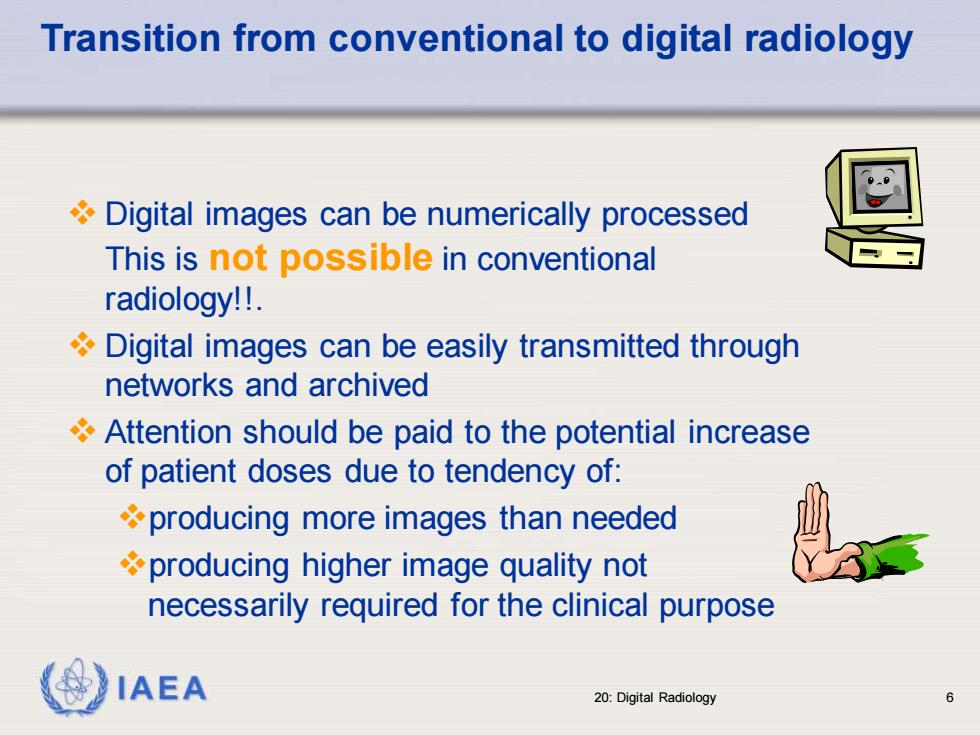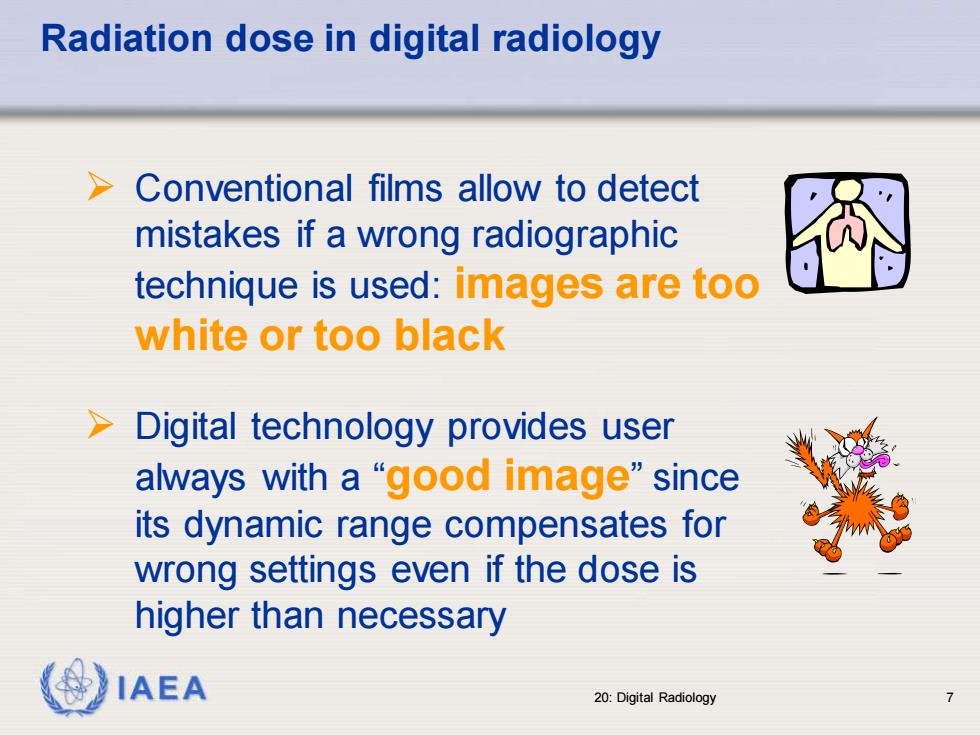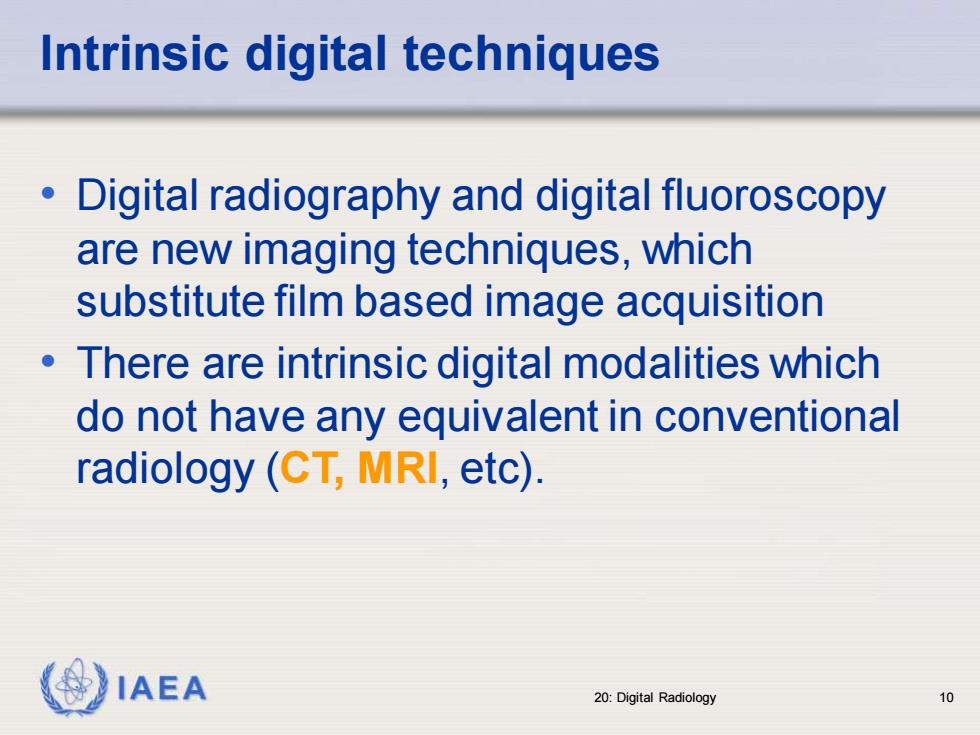
Transition from conventional to digital radiology Digital images can be numerically processed This is not possible in conventional radiology!!. Digital images can be easily transmitted through networks and archived Attention should be paid to the potential increase of patient doses due to tendency of: producing more images than needed producing higher image quality not necessarily required for the clinical purpose IAEA 20:Digital Radiology
IAEA 20: Digital Radiology 6 Transition from conventional to digital radiology ❖ Digital images can be numerically processed This is not possible in conventional radiology!!. ❖ Digital images can be easily transmitted through networks and archived ❖ Attention should be paid to the potential increase of patient doses due to tendency of: ❖producing more images than needed ❖producing higher image quality not necessarily required for the clinical purpose

Radiation dose in digital radiology >Conventional films allow to detect mistakes if a wrong radiographic technique is used:images are too white or too black >Digital technology provides user always with a“good image”since its dynamic range compensates for wrong settings even if the dose is higher than necessary IAEA 20:Digital Radiology
IAEA 20: Digital Radiology 7 Radiation dose in digital radiology ➢ Conventional films allow to detect mistakes if a wrong radiographic technique is used: images are too white or too black ➢ Digital technology provides user always with a “good image” since its dynamic range compensates for wrong settings even if the dose is higher than necessary

Vhat is“dynamic range”? Wide dose range to the detector,allows a "reasonable"image quality to be obtained Flat panel detectors(discussed later)have a dynamic range of 104(from 1 to 10,000) while a screen-film system has approximately 101.5 IAEA 20:Digital Radiology
IAEA 20: Digital Radiology 8 What is “dynamic range”? Wide dose range to the detector, allows a “reasonable” image quality to be obtained Flat panel detectors (discussed later) have a dynamic range of 104 (from 1 to 10,000) while a screen-film system has approximately 101.5

Characteristic curve of CR system 3.5 HR-III 3 CEA Film-Fuji Mammofine 2.5 2 品 1.5 CR response 1 0.5 0 .001 0.01 0.1 Air Kerma(mGy) IAEA 20:Digital Radiology
IAEA 20: Digital Radiology 9 Characteristic curve of CR system HR-III CEA Film-Fuji Mammofine CR response Air Kerma (mGy) 0.001 0.01 0.1 1 3.5 3 2.5 2 1.5 1 0.5 0 Density

Intrinsic digital techniques 0 Digital radiography and digital fluoroscopy are new imaging techniques,which substitute film based image acquisition There are intrinsic digital modalities which do not have any equivalent in conventional radiology(CT,MRI,etc). IAEA 20:Digital Radiology 10
IAEA 20: Digital Radiology 10 Intrinsic digital techniques • Digital radiography and digital fluoroscopy are new imaging techniques, which substitute film based image acquisition • There are intrinsic digital modalities which do not have any equivalent in conventional radiology (CT, MRI, etc)